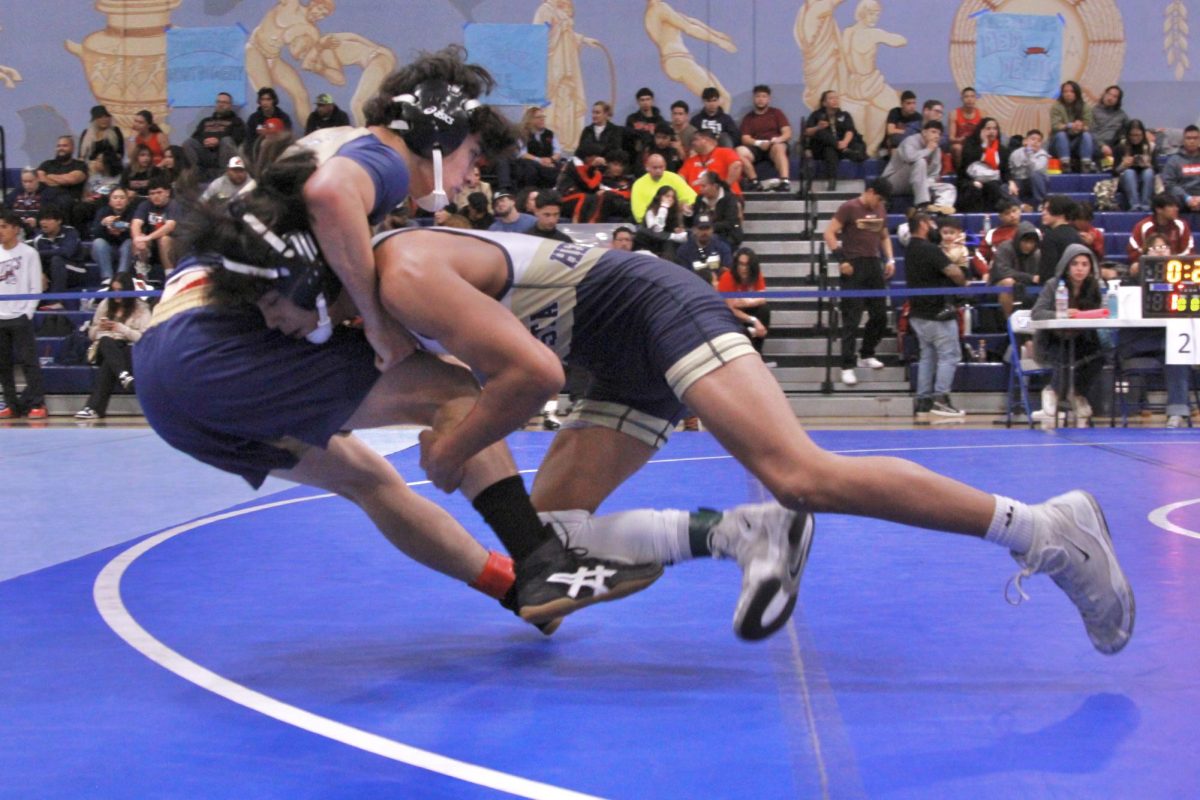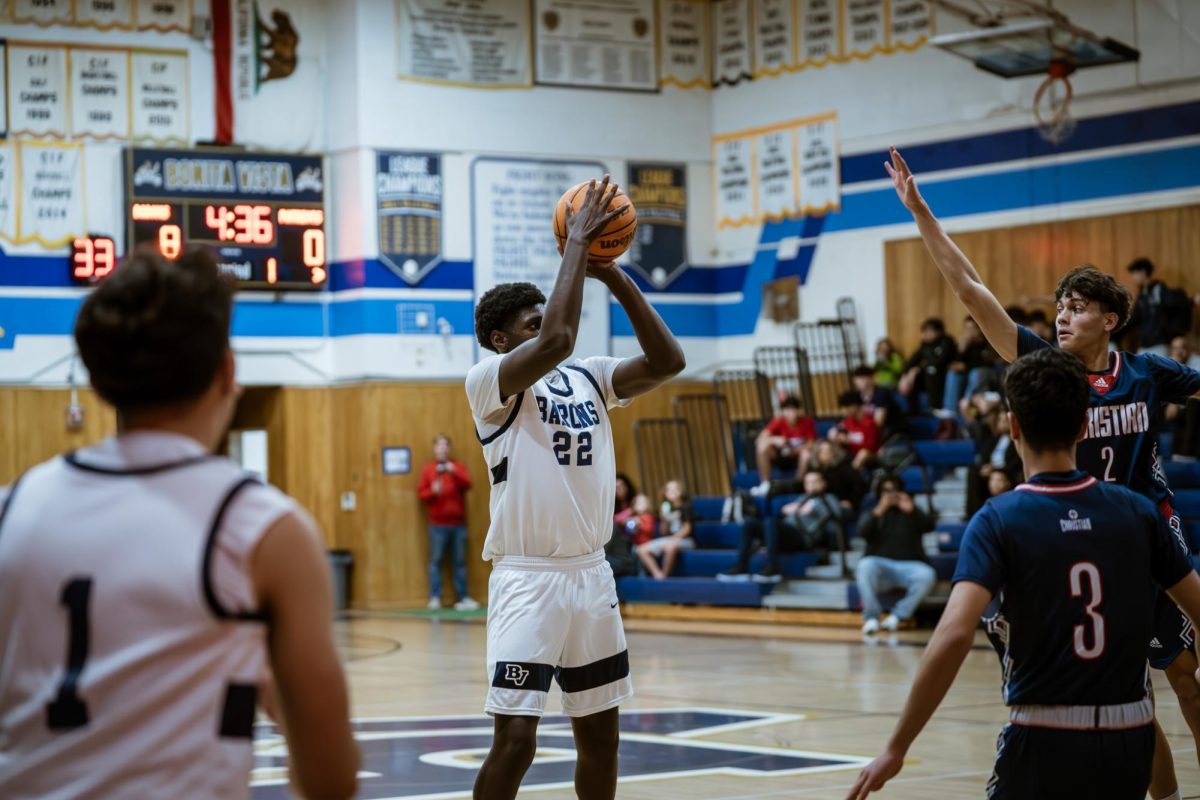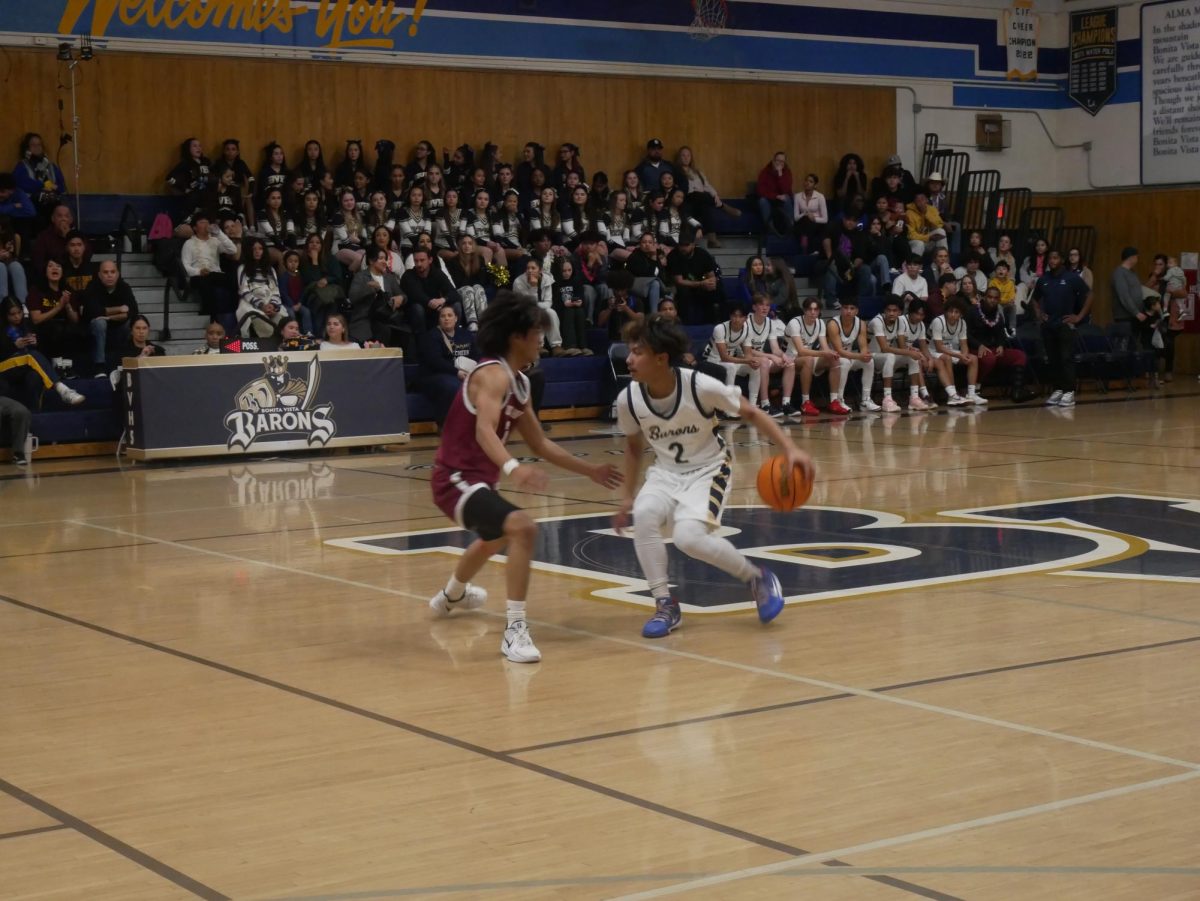Wrestlers cutting weight to compete in a different weight class is not a new phenomenon, and neither is the subsequent concern surrounding the act of cutting. When wrestlers cut weight they do so with the intention of becoming stronger and more competitive in a lower weight class. When done right, cutting can prove to be very beneficial. However, many wrestlers take on unhealthy methods to lose weight.
Among the Bonita Vista High (BVH) varsity wrestling team, cutting weight is a very common sacrifice. During the school week, after a two hour morning practice, both male and female wrestlers find themselves stepping on the scale to check their weight. If they are under or close to their desired weight, they work to maintain that weight before the upcoming round of scheduled “weigh-ins.” If they are overweight, they find themselves having the need to sweat out the excess.
“I wanted to go down to a lower weight class to give myself a better chance at winning the tournament. Because if you’re wrestling people who are smaller than you, then obviously you’re going to have a little bit of a size advantage,” girls’ wrestling co-captain and sophomore Ella Edvalson said.
Edvalson had been cutting for the Girls’ Metro League tournament—starting at her normal weight class of 137 lbs and trying to cut down to 133 lbs. A big part of cutting is changing one’s diet. Edvalson explains the changes she had to make to her diet in order to cut.
“I have to restrict food and what I am eating. Specifically I have to control how much I can eat and the amount of water I am drinking. There’s a lot of cravings. My diet is pretty much non-existent. I eat really light, like fruits and vegetables, and drink a lot of water. I like to use the artificial water flavorings to fill some cravings,” Edvalson said.
In contrast, boys’ varsity wrestler and sophomore Ivan Hernandez was inspired to bulk up a few weight classes after having suffered through the negative experiences of cutting weight. Hernandez, the team’s 126 lbs wrestler that started the season in the 113 lbs spot, explains how the practice of cutting weight had affected his body in regards to growth and nutrients.
“The weight cut was putting a lot of strain on my body and it was sort of stunting my growth. I didn’t want to do it any more. It feels as if you have no more nutrients in your body and it’s just not a good experience. You have no more energy and you just feel really, really weak,” Hernandez said.
Furthermore, Hernandez describes some of the severe side effects that occur during the weight cutting process. The controversy surrounding weight cutting comes not only from the studies that outline the long lasting effects the process can have on one’s body, but the unbearable feelings associated with the experience at the moment.
“While cutting it’s a lot of shaking and you get a lot of extra sleep because your body doesn’t have the energy to wake up and start the day,” Hernandez said. “In the past I’ve seen some of my teammates pass out from cutting. So there’s probably a little bit of controversy around the idea of cutting and the health of it.”
Hernandez notes that while he has had a poor experience with weight cutting, others like Edvalson have stated that it has benefited them significantly in tournaments and matches. Hernandez himself states how he performed better in a lower weight class. In the end, however, the difficult side effects outweighed the match advantage for the young wrestler.
“There’s always a benefit to it because you perform a lot better in tournaments. When I was wrestling at a lower weight class, I was able to overpower my opponents. But as soon as I transitioned into a heavier weight class, the strength and size of my opponents were completely different. It’s a different experience for everyone, and it just wasn’t it for me,” Hernandez said.
Most significantly, concern ebbs from the routes wrestlers take to lose weight. Many wrestlers use techniques such as over exercise, calorie restriction, fasting and dehydration methods to lose weight, which can be severely damaging. Hernandez stresses the importance of not only cutting using healthy methods, but having a support system while going through the cutting process.
“Family, teammates, and coaches are all the big three when it comes to cutting. If you ever need help, you have your coach to be there to tell you what to do. Your family is more the nutritional part because even though you’re cutting out a lot of the foods and nutrients, you still need to consume certain foods that will help you lose weight. Teammates are more about how you lose the weight physically because without good teammates, you wouldn’t be able to lose all that weight from practicing intensely,” Hernandez said.
BVH assistant wrestling coach Zack Griebel has an extensive history with wrestling as both a wrestler and coach. Throughout his years of high school wrestling, he found the act of cutting to be difficult to manage and usually avoided it. Additionally, he views cutting to be a less advantageous process.
“I had teammates that thought they would wrestle stronger [if they cut weight]. They would start at 155 but were [cutting weight to] wrestle at 140. But by dropping so much weight, especially in high school, they were really just making themselves weaker in their matches. You might be a bigger person wrestling a smaller person, but you’re usually at that point very dehydrated so you’re not strong in your matches,” Griebel said.
Griebel explains some of the extreme lengths his fellow wrestlers would go to in order to cut weight for a match. After these methods, Griebel would witness how his peers would become severely dehydrated and exhausted.
“When I was really young there were a lot of people cutting weight in extreme ways. We would work out in sauna suits that were basically trash bags with taped up your sleeves. You would just exhaust yourself and dehydrate yourself so you’re losing water weight. It was something that’s too extreme to be doing well in advance of a match,” Griebel said.
Along with these extreme methods came extreme side effects, most of which Griebel notes will catch up to wrestlers in the future. To combat this, Griebel explains some of the better and healthier methods to cut weight.
“The best method is always going to be to manage your weight and not let yourself get extremely over. Cutting a pound or two of water weight the night before is no big deal. You just have to be smart about your nutrition. Eat the things that are going to easily go through you. Things that you burn more calories actually consuming than you do eating. It’s just about doing things the smart and healthy way,” Griebel said.
As a coach, Griebel and the other wrestling coaches prioritize the health of their wrestlers. It is a wrestlers choice to cut or bulk to change weight classes, and the coaches job to assist them in what they choose. For example, BVH head wrestling coach Coach Joe Marcotte and assistant coach Phil Davis build nutrition plans in order for their wrestlers to be mindful of their diets, but in a regulated and healthy manner. Griebel highlights the role a coach should play in a wrestler’s cutting journey.
“Coach Phil and Coach Joe are really heavy on nutrition. [It is our job to] educate the wrestlers on healthy methods and not allow them to go against regulations and cause harm to their body. A lot of the time [wrestlers] don’t really know the long term effects when they’re utilizing bad practices. So it’s the coaches’ jobs to prevent them from doing that,” Griebel said.





